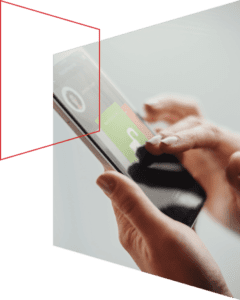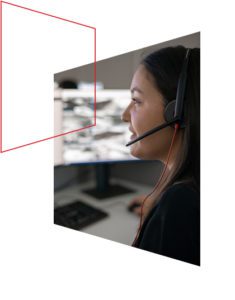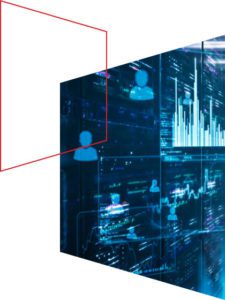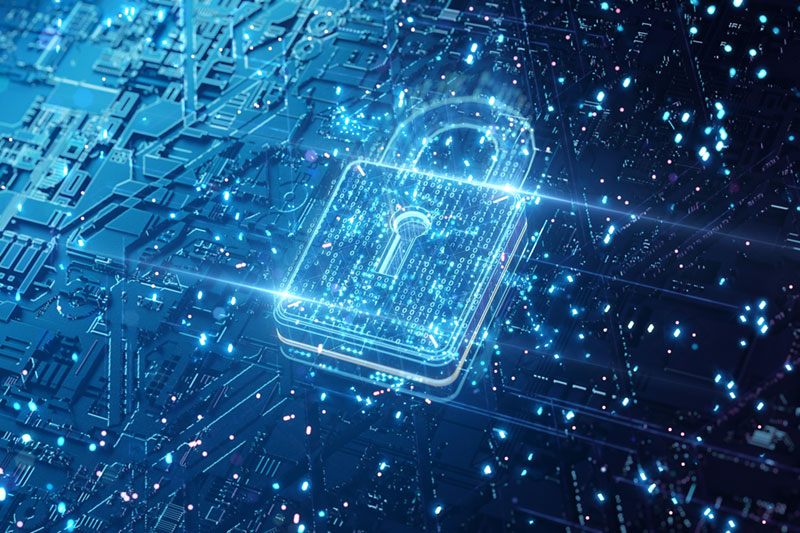Delivering technology, processes, and oversight to secure the workplace of the future.
Physical security and access control technologies have come a long way since the invention of the mechanical door lock more than six thousand years ago. The earliest locks were pin-tumbler-style devices built entirely of wood. Hand-carved by locksmiths in ancient Egypt, these locks were large, heavy and awkwardly designed, with giant keys that somewhat resembled toothbrushes.
For many years afterwards, building security continued to be achieved primarily through human surveillance and physical access control measures like deadbolts and door locks. It wasn’t until the late twentieth century — with the advent of closed-circuit television and intruder alarms — that ways of keeping people and buildings safe began to evolve in tandem with the development of technology. Since then, technological innovation (especially advances in information and communication technologies) and physical security have become inextricably intertwined.
Today’s Security-as-a-Service offerings are the culmination of this trend. Security-as-a-Service makes it possible for facilities managers and human resources (HR) decision-makers to take full advantage of the benefits of digital transformation. This new service model brings the increased efficiency and enhanced effectiveness that digitization and modern computing technologies have created across all areas of the business into the realm of physical security.
As digital transformation has become commonplace, business leaders have grown more comfortable relying on Software-as-a-Service (SaaS) applications for a broad array of purposes within day-to-day operations. As a result, stakeholders are open to consuming building and facility security according to a similar model.
Security-as-a-Service comes with all the advantages of cloud computing. It gives facilities managers and building occupants alike access to cutting-edge capabilities that make physical security systems smarter. These include remote monitoring and management of access control, video surveillance streaming and offsite storage of access activity data and video surveillance records. Plus, software updates are automatically pushed out from the cloud in real time. This means that users always have access to the latest — and most secure — version of the application, without the need for onsite maintenance staff to spend time or effort keeping it up to date.
 How the Security-as-a-Service model evolved
How the Security-as-a-Service model evolved
The popularization of the Software-as-a-Service (SaaS) model for software licensing and delivery has transformed the ways that companies gain access to applications, databases and other computing resources. SaaS brings many benefits to its customers. It’s cost-effective, limiting upfront expenditures and giving customers immediate access to the latest software. This can serve as an engine to power innovation. SaaS also makes software easy to access and consume. As a result, the concept of SaaS has not only become dominant in IT, but has also been extended into a business model that’s now being employed for a multitude of other technology use cases in a broad array of industries.
Among smaller and midsized organizations, outsourcing IT services has become nearly ubiquitous for similar reasons. Companies don’t always have access to the required skills and capabilities necessary for managing their IT environments in-house, and greatly benefit from having access to experts who focus on this area alone.
Outsourcing responsibility for the physical security of buildings and facilities to a Security-as-a-Service provider is currently growing in prevalence as well. Its numerous benefits overlap with those that come with the SaaS model as well as those of IT outsourcing. Customers gain access to top-notch expertise in physical security without having to add headcount for on-site security staff who won’t otherwise contribute to the business’s operations, strategy or competitive advantage. Instead, customers can maintain focus on their core business, without needing to extend themselves into many other areas. And HR and facilities managers can spend their time doing what they’re best at — since they’re not necessarily building security experts.
The benefits of Security-as-a-Service
Security-as-a-Service gives even the smallest of organizations access to industry-leading, enterprise-grade technologies as well as expert human monitoring services. Building users will experience ease and convenience, since they’ll be able to use card or touchless access systems as well as other smart, technology-enabled solutions.
Leading Security-as-a-Service providers can seamlessly integrate IT and physical facility security solutions, which is becoming mission-critical for businesses in today’s digital-first world. They can also leverage advanced technologies and cloud-connected systems, making it possible to use cutting-edge tools like predictive data analytics to better protect buildings, physical assets and IT systems all at once.
Not only is Security-as-a-Service cost-effective, but it simplifies facilities managers’ jobs by removing a challenging task from their workload at a time when many are struggling to adapt to the new usage trends, capacity limits and spacing requirements that the COVID-19 pandemic has created. The best Security-as-a-Service offerings include ongoing maintenance and monitoring, which means the provider will manage the entire system, not just the software and offsite hosting. Plus, an experienced provider can manage all reporting, making it possible to meet audit and compliance requirements with little to no effort on your part.
Together, this all adds up to peace of mind for Security-as-a-Service customers.
 Security-as-a-Service and the office of the future
Security-as-a-Service and the office of the future
In tomorrow’s offices, there will be greater reliance on cyberphysical systems, which will enable the further integration of building and physical facility security and IT. Emerging technology trends such as the accelerating adoption of the Internet of Things (IoT) will make connected devices the norm, so that facilities managers can incorporate data analytics and automation into physical security controls. The move to the cloud will also make access to technologies that save time, make physical security monitoring more effective and improve building occupant experience more widely available. One example of this is the use of a single credential to access multiple facilities in an organization that spans several locations.
Artificial intelligence (AI) will drive the tools that perform routine monitoring and surveillance, notifying a human security expert only when there’s an anomaly that warrants further attention. Meanwhile, facial recognition technology will make it possible to streamline and optimize access management and pattern tracking.
Digital technologies will be ever more deeply integrated into space usage, capacity and access controls. With advanced, data-driven access systems, it’ll be easier for HR teams to manage hybrid workplaces. This is because employees are able to reserve desks, conference rooms or other in-office spaces whenever they need them, with access systems able to automatically determine how much space is available or whether collaborators on a project will be in the same office at the same time. The data that these systems generate can also be leveraged for planning purposes or to help employers address health and safety concerns.
It’s also likely that Security-as-a-Service solutions will be relied on much more heavily in the office of the future. According to Gartner, 80% of organizations expect to be using Security-as-a-Service by 2023, and there’s good reason for this: it’s a high-value offering with a great deal of potential to improve in-office experience.
Within the last few years, the sophistication of the technologies available to help keep buildings and physical facilities secure has grown by leaps and bounds. There’s no indication that this trend will slow down. Instead, we expect to see a smarter, safer and more efficient future, with increasing adoption of Security-as-a-Service and other technologies that will add convenience for facilities managers and employees alike.
With more than 50 years of experience providing security services, Kastle Systems has been a front-runner in taking Security-as-a-Service from concept to full-fledged service offering. Even before the advent of the cloud, we were building proprietary solutions to make remote monitoring possible. Today, we continue to lead the industry with innovative, future-focused security management solutions that save money, increase productivity and keep enterprise facilities secure.
To learn more about the unparalleled security management services we deliver, check out our Security-as-a-Service offerings.

